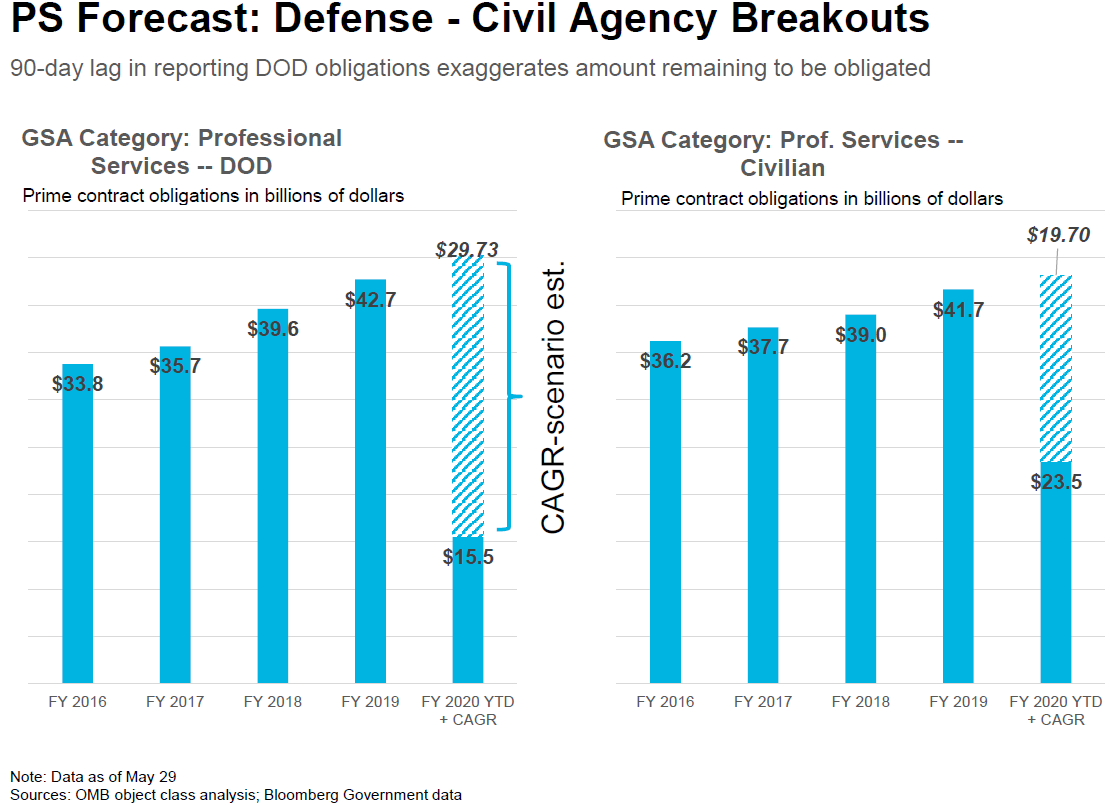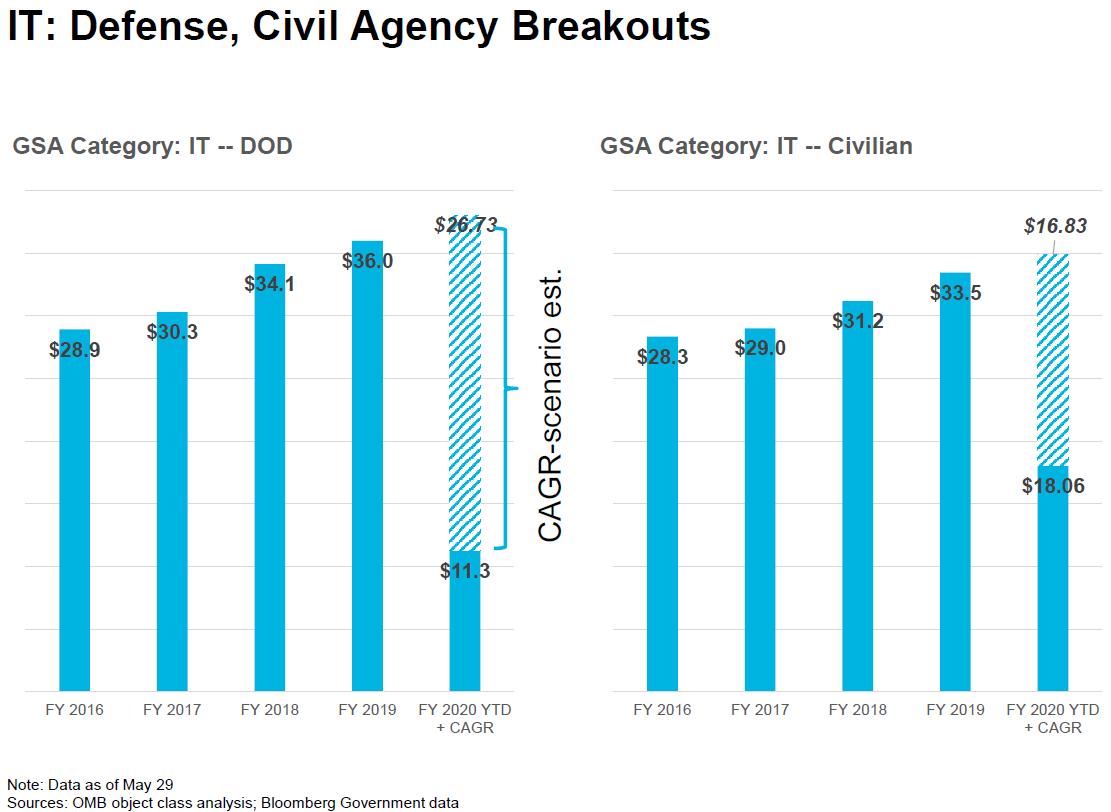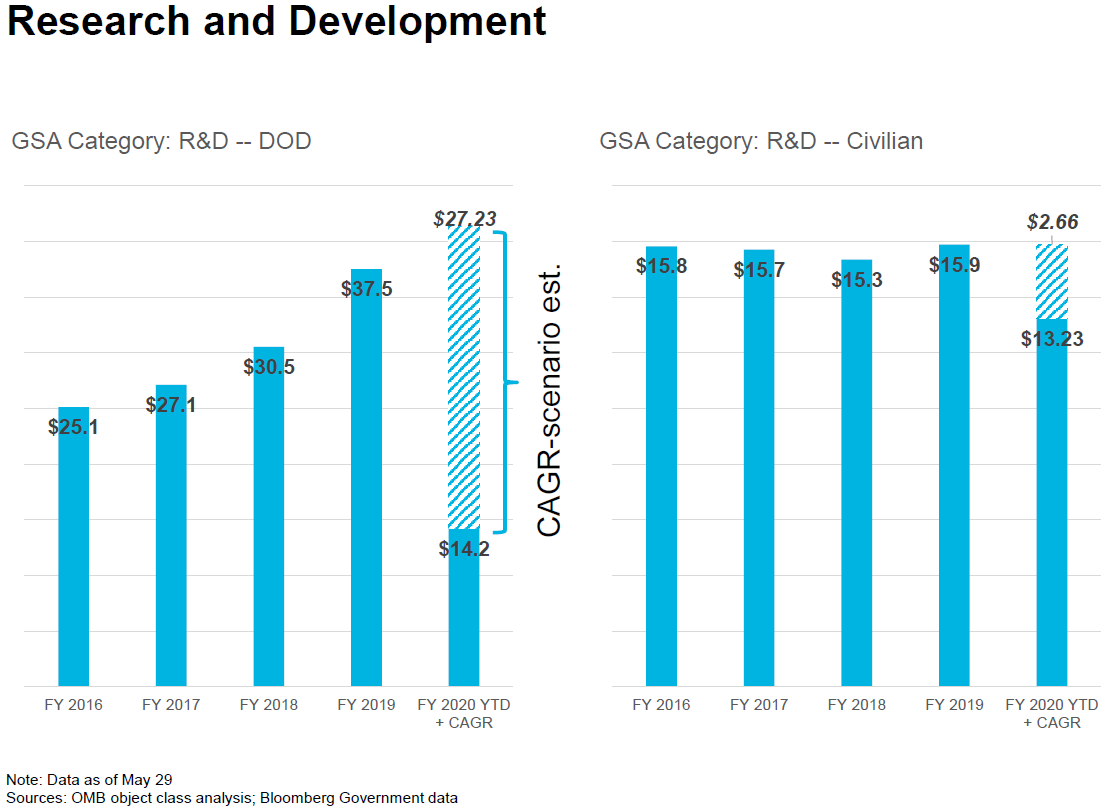

The fourth quarter sprint to the finish line of the 2020 fiscal year starts in less than three weeks. So what can federal contractors expect?
The fourth quarter sprint to the finish line of the 2020 fiscal year starts in less than three weeks. So what can federal contractors expect? According to Cameron Leuthy, a senior analyst at Bloomberg Government, professional services will be big, the coronavirus pandemic will present both complications and opportunities, and small businesses should already be getting ready.
To project what’s coming, analysts usually look to the previous year as a template. In 2019, Q4 included 30% of all obligations for the entire fiscal year. The Defense Department alone spent just shy of $120 billion. The departments of Housing and Urban Development, Interior and State each had more than 50% of their total obligations for 2019 in the fourth quarter. September was particularly lucrative, with $94.3B spent that month alone, 66% of which came from DoD.
There are a number of reasons for that, Leuthy said. Sometimes those reasons include policy, or maximizing potential leverage with foreign governments, in the case of the State Department. Sometimes funds are just deliberately held back from obligations, though there can be legal ramifications for that.
“Civilian agencies did hold back in some cases, because of the difference between the amount the administration asked for and the amount that Congress eventually ended up appropriating,” Leuthy said. “There’s also an incentive, and a prudent one, to hold back obligations during CRs and not get ahead of yourself.”
Regardless of the reasons, Q4 is always particularly lucrative, especially for small businesses. In September 2019, small businesses got about 29% of that $94.3 billion, which is a larger share than usual. DoD spent about $15 billion with small businesses, while the Department of Health and Human Services spent about $1.7 billion. The Department of Veterans Affairs spent $2.1 billion, a whopping 55% of its obligations for that month.
“So if you’re a small business and you have a footprint at VA, you should be gearing up now to get ready,” Leuthy said. “You should be having those conversations with the contracting officer with the program manager. It’s not too early.”
Breaking the anticipated spend down across professional services, IT, and research and development, Leuthy and Bloomberg Government used a combined annual growth rate projection, which he said tends to fall more in line with what Congress actually appropriates, as opposed to what the administration projects.
Professional services has the most opportunity according to the projections. Fourth quarter obligations are expected to be $29.73 billion on the defense side, and $19.70 billion on the civilian side.

On the IT side, the coronavirus pandemic has proven the need for improved citizen services, legacy systems still need maintenance, and modernization, cloud and cyber efforts continue.

“I don’t think there’s much question that this is going to continue to be a growth market,” Leuthy said. “The question is, where will the pockets of growth be? Because the problem is so large, that it is not going to be across-the-board investments at every agency and you still have the majority of IT spend is for IT services, particularly for maintenance of legacy systems. So the modernization effort is a much smaller part of the pie here, but that market overall continues to grow.”
As for research and development, DoD is driving most of the growth, with the Air Force as the biggest buyer. Meanwhile, on the civilian side, NASA’s renewed aspirations for space have made it the top buyer.

But NASA isn’t the only big spender on the civilian side. HHS is expected to spend a significant amount of money responding to the coronavirus in Q4. Just to name a few, HHS has contracts worth more than $100 million for treatments and supply chain modernization, another worth up to $100m for technologies like contact tracing and mapping, and a contract worth more than $1 billion for 100,000 or more ventilators. Leuthy said coronavirus spending is expected to reach $600 billion by the end of the fiscal year.
But the pandemic is already affecting how contractors are performing their work. Leuthy said contractors should expect payment delays, though there shouldn’t be any instances of loss of payment. In general, he said, contractors should continue working with the expectation that they’ll get paid, unless of course a stop-work order was issued. He also suggested contractors review FAR 52.249-14, FAR 52.249-8, and FAR 52.212-4 to see if contract delays are permissible.
Copyright © 2025 Federal News Network. All rights reserved. This website is not intended for users located within the European Economic Area.
Daisy Thornton is Federal News Network’s digital managing editor. In addition to her editing responsibilities, she covers federal management, workforce and technology issues. She is also the commentary editor; email her your letters to the editor and pitches for contributed bylines.
Follow @dthorntonWFED

